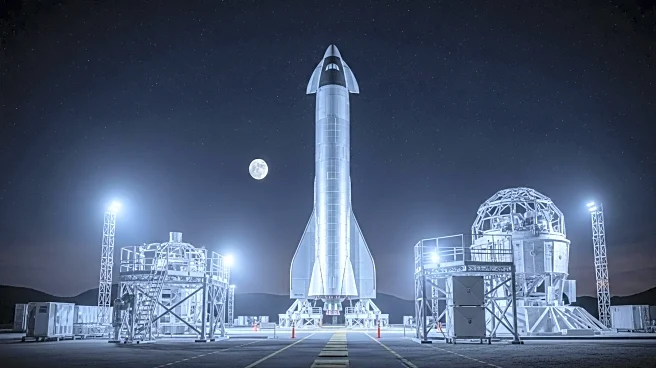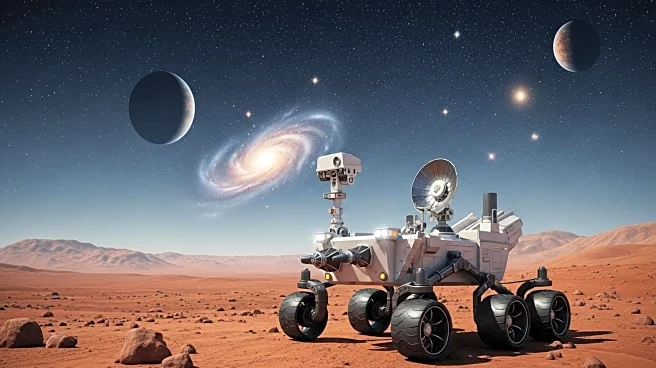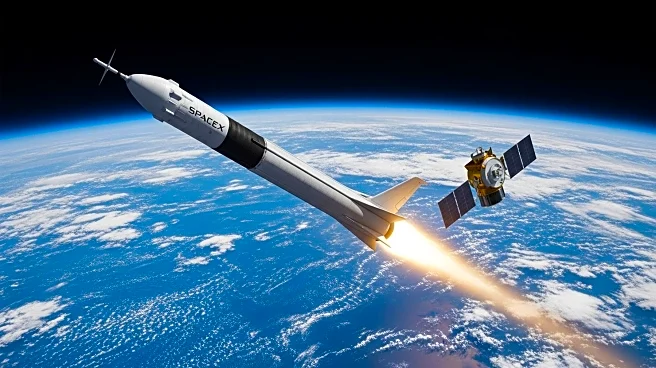What's Happening?
SpaceX is set to launch Starship Flight 11 on October 13, 2025, marking the final test of its Version 2 design. This launch is crucial for SpaceX's plans to revolutionize space travel and advance its Mars exploration ambitions. The flight will test multiple systems, including satellite deployment mechanisms and heat shield performance. The Starship, designed to be the most powerful rocket ever built, aims to significantly reduce space travel costs through its fully reusable system.
Why It's Important?
The success of Starship Flight 11 is pivotal for SpaceX's goal of enabling interplanetary travel, particularly to Mars. A successful test would demonstrate the viability of a fully reusable rocket system, potentially lowering the cost of space missions and opening new opportunities for exploration and commercial activities in space. This could accelerate human settlement on Mars and other celestial bodies, transforming space travel from a governmental to a commercial endeavor.
What's Next?
Following the test, SpaceX plans to introduce Version 3 of Starship, which will be larger and more capable. The company aims to continue refining its technology to support future Mars missions. The success of this launch could influence other space agencies and private companies to invest in similar technologies, fostering competition and innovation in the space industry.
Beyond the Headlines
The development of reusable rocket technology raises questions about space traffic management and the environmental impact of increased launches. As space becomes more accessible, there is a need for international regulations to manage space debris and ensure sustainable exploration. The potential for human settlement on Mars also prompts ethical considerations about planetary protection and the preservation of extraterrestrial environments.










